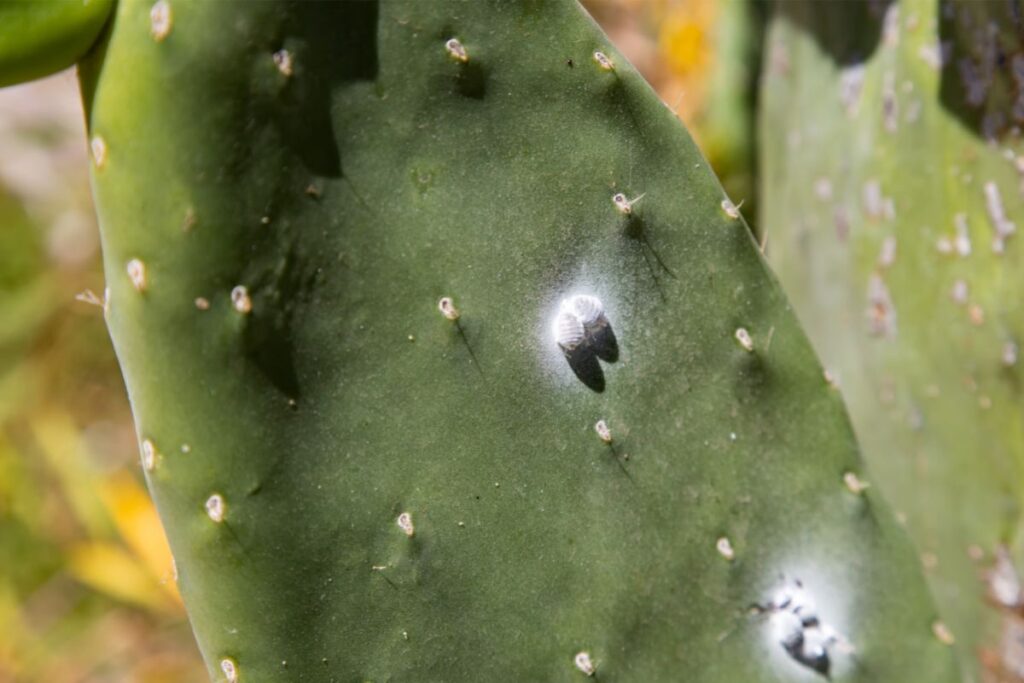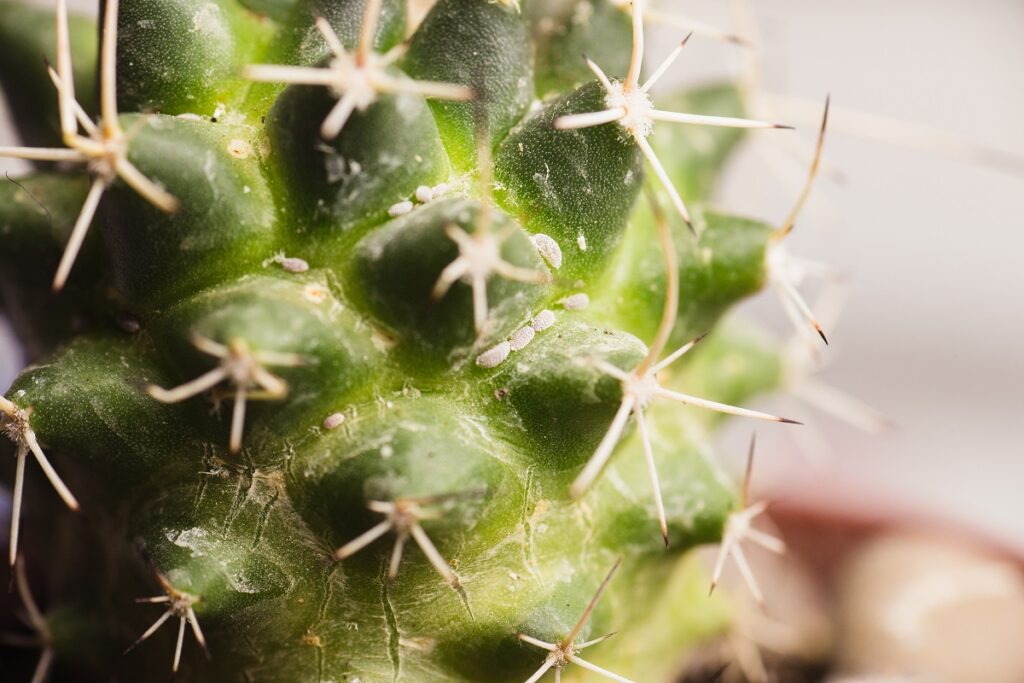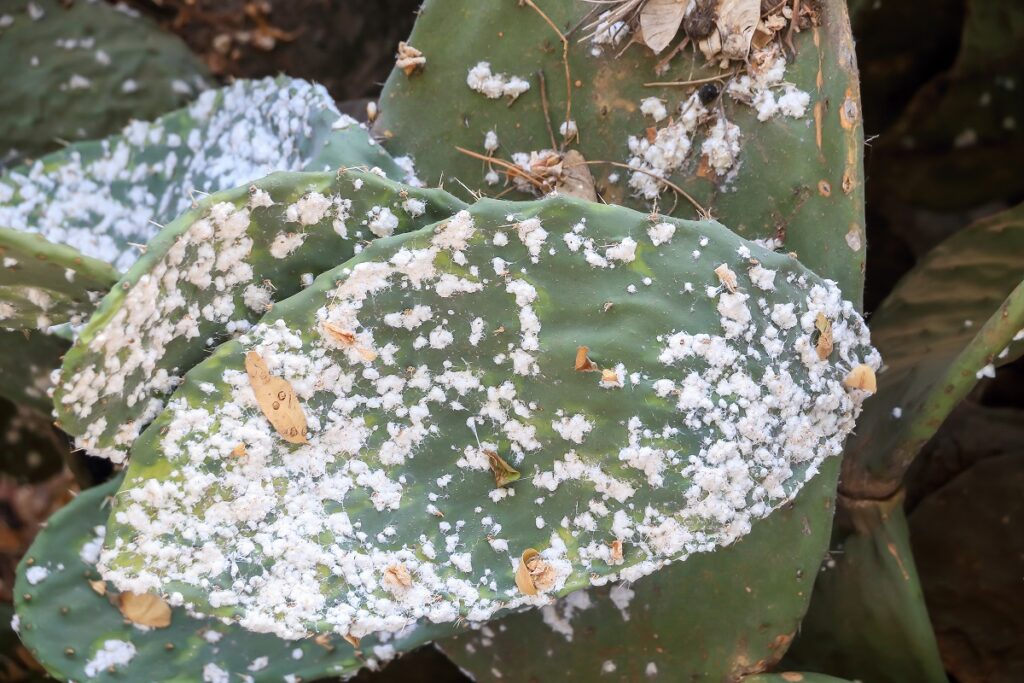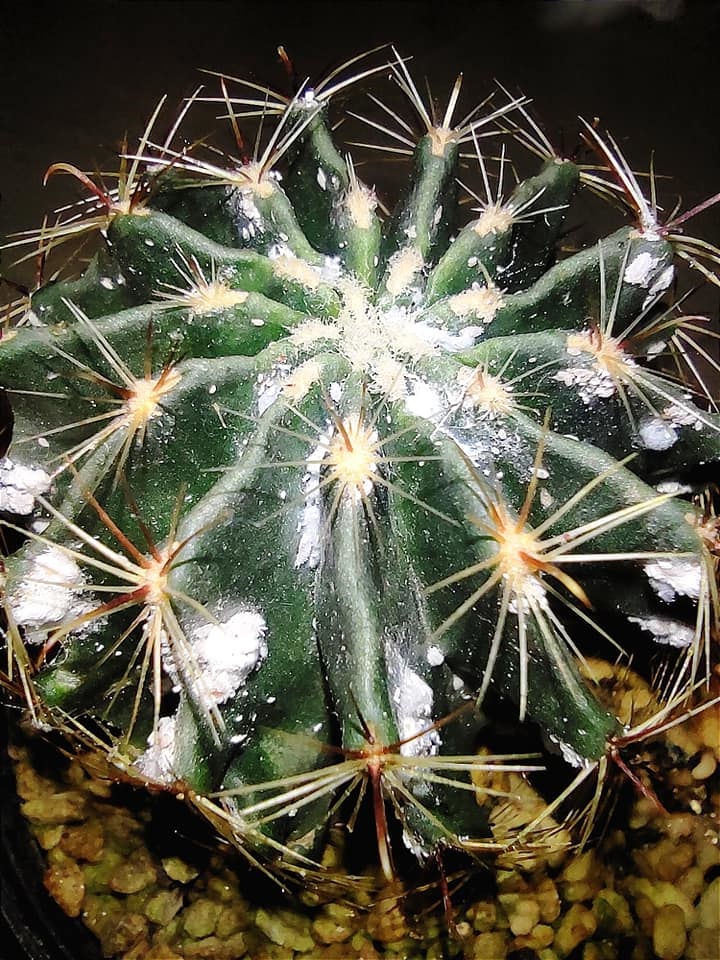White Fuzz on Cactus: What You Need to Know
Have you ever noticed a white fuzz on your cactus? This white, cottony material may be a sign of mealybugs, small insects that can cause significant damage to your plant. Knowing how to get rid of white fuzz on cactus is key for keeping the plant healthy and safe from harm. In this guide, we’ll discuss all the steps you need to take to safely, effectively, and efficiently get rid of white fuzz on cacti due to mealybugs.

Contents
How Cacti Develop White Fuzz
The white fuzz on cacti is a symptom of infestation by mealybugs. Mealybugs are small, sap-sucking insects in the family Pseudococcidae. They are often white, wax-like in appearance, and measure up to 3 mm in length. Their bodies are covered with a waxy layer that gives them a fuzzy or cottony look. These bugs cluster and form groups as their population increases on your cacti. This clumping together looks like white fuzz because their bodies are covered with wax that resembles cotton.
Female adult mealybugs deposit eggs and then create an ovisac to protect them. The ovisac, which resembles cotton, and the mealy wax discharge appear to the naked eye as microscopic specks of cotton. Mealybugs feed on plant sap by inserting their stylet into the plant’s vascular system and drinking the nutrient-rich liquid. While this may seem harmless, mealybugs can cause significant damage to cacti by weakening them and potentially leading to fungal infections. In some cases, severe infestations can even kill cacti.
Eliminating White Fuzz on Cactus
Mealybug infestations can be controlled using a variety of techniques. The optimal approach, meanwhile, can differ depending on whether you’re growing your cactus indoors or outdoors.
For Indoors

If your cactus is infested with mealybugs, the first step should be to quarantine the plant. Isolate it from any other plants you have to prevent the spread of infection. This can help protect your other plants and make it easier to concentrate on treating the affected cactus.
Once your cactus is quarantined, removing any visible mealybugs is time. This can be done using a cotton swab dipped in rubbing alcohol and water mixture. Dip the swab into the alcohol and water solution, having 1 part rubbing alcohol and 3 parts water, then gently rub it over the mealybugs until they’re gone.
Make sure you get both sides of the cactus, as mealybugs can hide on the undersides of leaves. You can also pour the mixture into a spray bottle and spray it over the cactus. The telltale sign that you’ve done this correctly is that the mealybugs should turn brown. Avoid spraying rubbing alcohol directly on your succulents, as it can harm and damage them. It is essential to test the treatment on a small part of the cactus because it could still be potent enough to burn your succulents even when weakened.
You may also want to use insecticidal soap or neem oil spray to remove any remaining mealybugs. Insecticidal soaps work by coating the bugs and clogging their respiratory systems, while neem oil is a natural pesticide that can be used for many different pests. Mix the soap or neem oil in water according to the manufacturer’s instructions to avoid burning your cacti and apply it directly to your cactus using a spray bottle. Once you’ve sprayed your cacti with the solution, rinse them off using clean water to rid the plant of mealybugs. This crucial step will ensure your cacti remain healthy and pest-free! You might need to repeat this treatment weekly before the mealybugs are gone.
Finally, once you’ve removed all visible mealybugs from your cactus, it’s important to take preventative steps to discourage future infestations. This can involve keeping the area around your cactus clean, checking it regularly for signs of mealybugs, and ensuring the plant receives proper care (such as adequate light, water, and fertilizer) to stay healthy.
For Outdoors

Ladybugs are a natural, effective way to control mealybug infestations on outdoor cacti without causing any damage. Unlike rubbing alcohol and neem oil, which should only be used for indoor plants due to their potential for causing sunburn on outdoor cacti, ladybugs can be safely released onto your cacti to help eliminate the mealybugs. Ladybugs are a great way to naturally control mealybug populations and protect your beloved cacti from damage.
Cryptolaemus montrouzieri is an effective and commercially available predator of mealybugs, making it the perfect solution for cactus gardens in need of pest control. To ensure their best results, they should be released into their environment at dusk during the spring or fall seasons when temperatures are naturally more hospitable. Watering plants before release will give the ladybugs an immediate source of moisture, encouraging them to remain on the paddles and feed voraciously. This method of pest management is both simple and effective. A balanced ecosystem should also be maintained to keep Cryptolaemus montrouzieri populations thriving.
Introducing other predatory insects can provide the mealybugs with enough natural enemies to control their spread. If you’ve been unsuccessful in controlling mealybugs on your outdoor cacti using natural methods such as ladybugs, you are likely dealing with a severe infestation. In this case, a more potent solution is required to eradicate these pests completely. For this purpose, mild chemical insecticides can be safely used on succulents without causing any damage. It’s important to note that chemical solutions should only be used as a last resort after other methods have been exhausted.
How to Prevent White Fuzz on Cactus

There are several ways to prevent white fuzz from developing on your cacti. Make sure you’re providing the right environmental conditions for your cactus to thrive. Here’s how you can help keep your cacti healthy and free of pests:
1. Avoid Overwatering
Overwatering is one of the most common mistakes when it comes to cacti. When your plants are overwatered, they become prone to fungal and bacterial infections, which can lead to the white fuzz on their paddles. To prevent this from happening, ensure you are providing your cacti with the right amount of water and allowing them to dry out completely between watering.
2. Provide Proper Lighting
Your cacti also need the right amount of light to stay healthy and pest-free. While cacti can thrive in bright and direct sunlight or indirect, diffused light, they should never be placed in shady areas. If your cacti are not receiving the right amount of lighting, it can cause them to become stressed, leading to an infestation of white fuzz.
3. Provide Proper Air Circulation
For your cacti to stay healthy, they need proper air circulation. When your cacti are kept in a closed container or room with poor ventilation, it can cause them to become stressed and susceptible to pests. Make sure your plants are kept in a well-ventilated area for optimal health.
4. Control Your Plant’s Temperature
Cacti should never be exposed to temperatures below 50° F or above 90° F. Keeping your cactus at a consistent temperature will help maintain its health and reduce the risk of white fuzz infestation.
Following these tips, you can keep your cacti healthy and free from the white fuzz. With the right environmental conditions, your cacti can remain safe and beautiful for years to come.
FAQs
Why is my cactus growing white fuzz?
White fuzz on cacti is typically caused by mealybugs, small white insects that feed off the plant’s sap. Mealybugs can be difficult to control, so it is important to act quickly when you notice the white fuzz developing on your cactus. Mealybugs attack your cactus because it is stressed or has been overwatered, so be sure to provide the right environmental conditions for your cactus to stay healthy.
What does cactus mold look like?
Cactus mold is a white, fuzzy growth that looks similar to cotton. It can form on the surface of your cacti and can indicate overwatering or too high humidity. If you notice this white fuzz on your cacti, it is important to take action immediately.
Why did my cactus get moldy?
Mold growth is one of the most common problems faced by cacti owners. Various environmental factors, including insufficient light, excess humidity, over-watering, and nutrient deficiencies, can cause mold growth.
How do I get rid of the white scales on my cactus?
White scales on cacti can be difficult to control. To get rid of the white scales, first, try physically removing them with a soft brush. You can also use 50/50 rubbing alcohol and water solution to remove the scales or an insecticidal soap or neem oil. In case of severe issues, using chemical pesticides is crucial, be sure to follow the directions on the product and use protective gear when applying any chemicals or insecticides.
What do cactus mites look like?
Cactus mites are closely related to spiders. These tiny arachnids, sometimes reddish-brown, feed on the sap of cacti. They are difficult to spot with the naked eye, but if you look closely, you may be able to see dust or small webs on or near your cactus.
Conclusion
Cacti owners can often face various pests-related issues, such as white fuzz, mites, and mold growth. While some of these problems can be difficult to control, you can keep your cacti healthy and free from pests with the right environmental conditions and care routine. Be sure to provide the right amount of water, light, air circulation, and temperature to your cacti to keep them healthy and beautiful.
To get rid of white fuzz and other pests, you can use rubbing alcohol or insecticidal soap to remove them or a chemical pesticide in cases of severe infestations. With the right care and attention, your cactus can remain healthy and problem-free.
